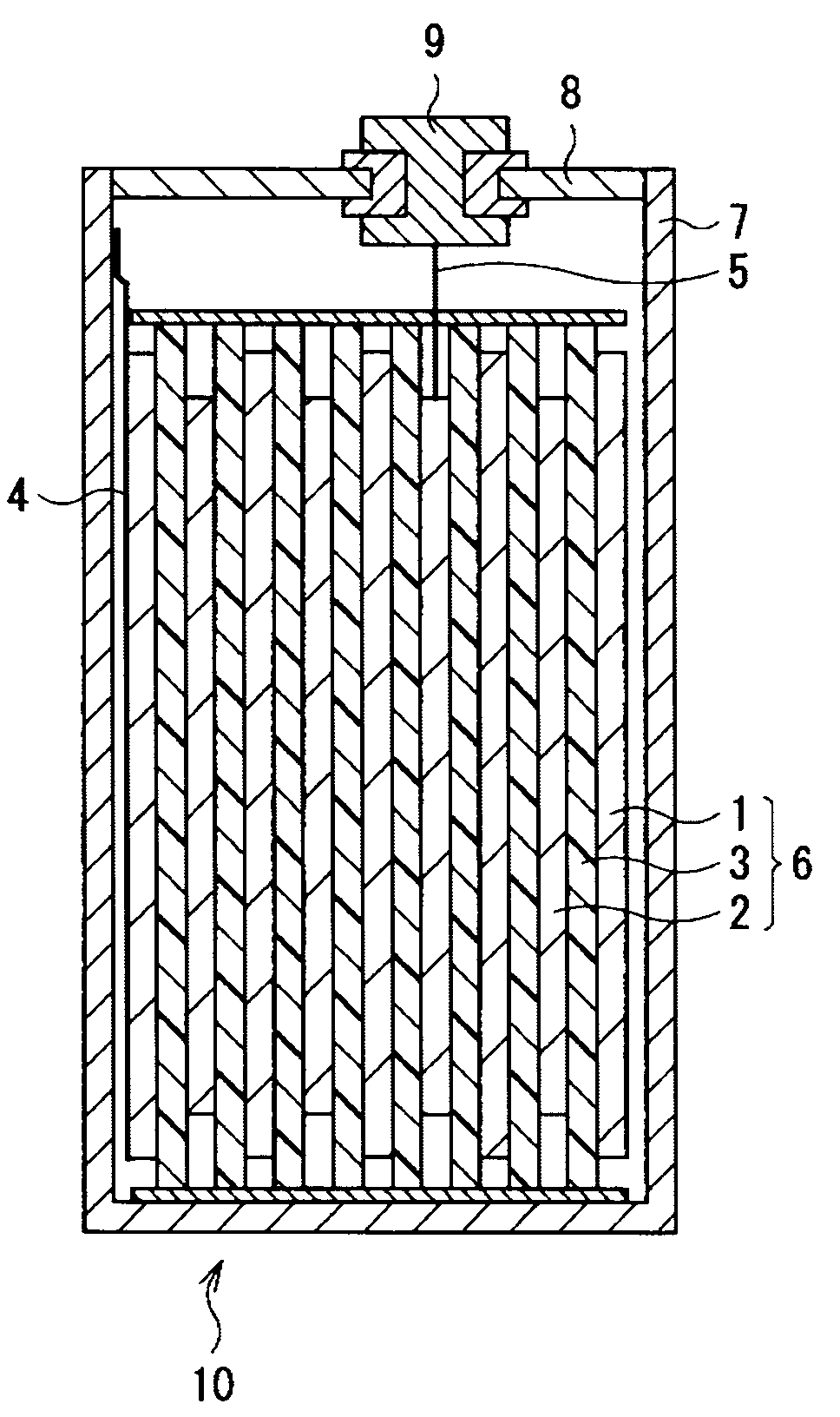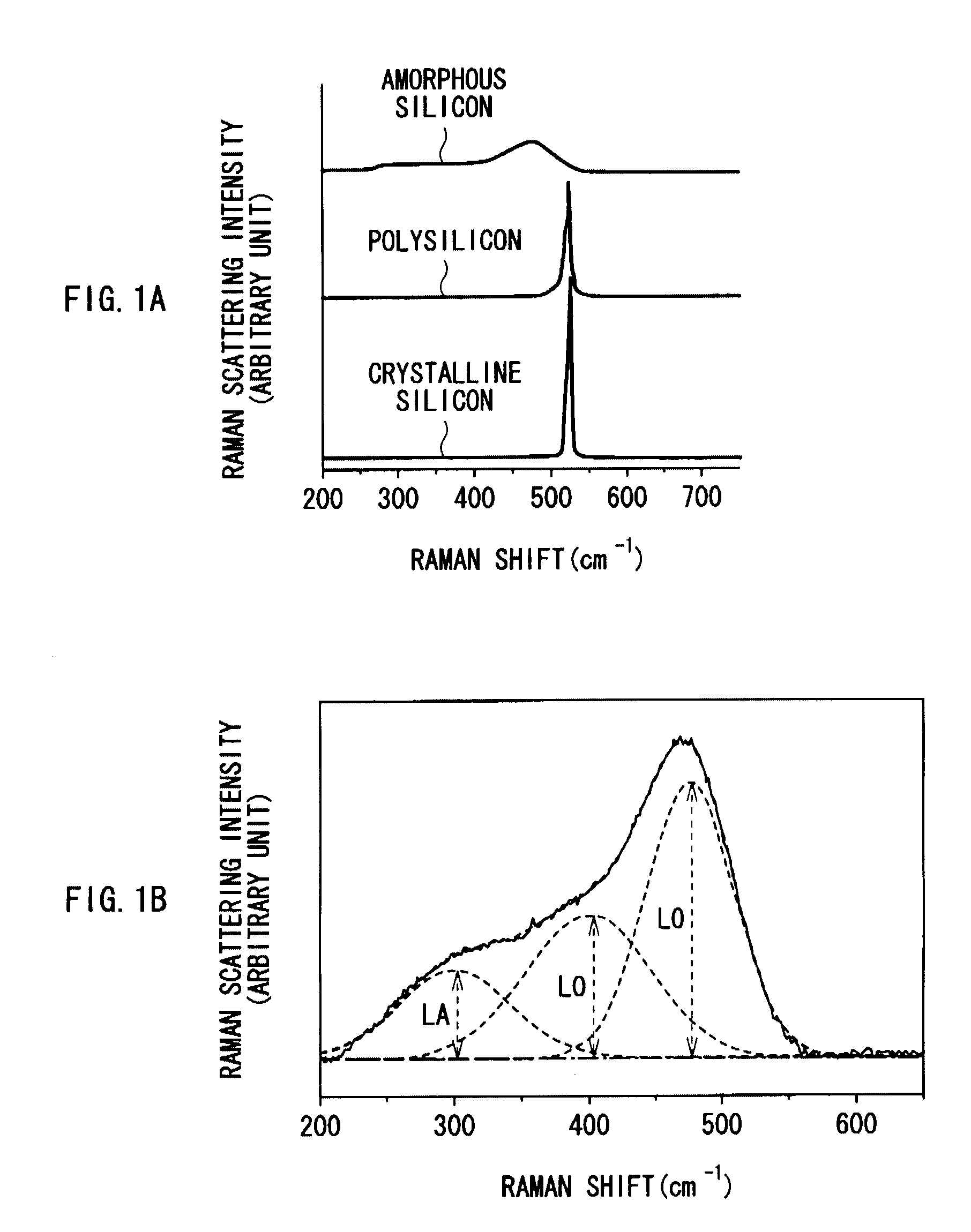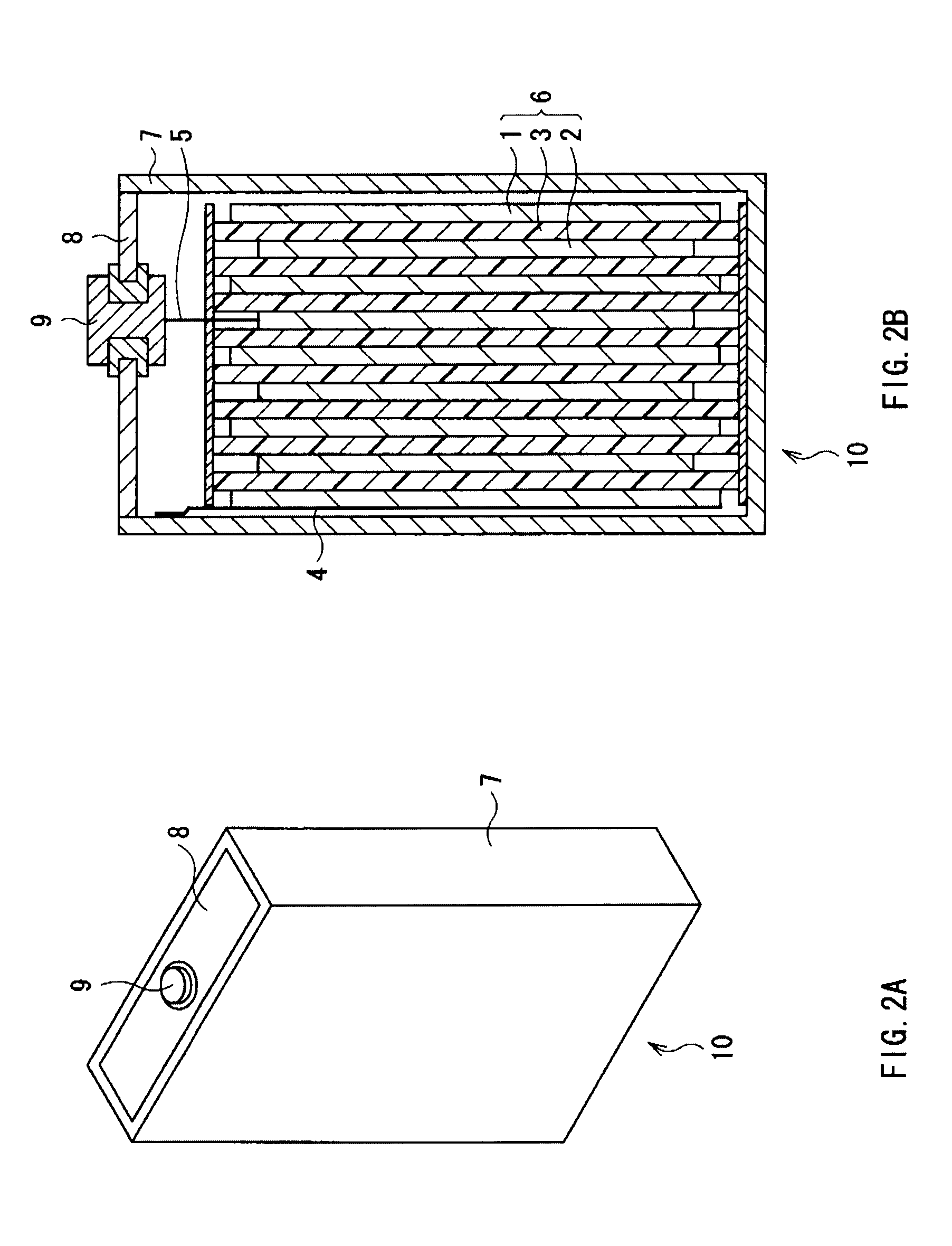Anode for secondary battery, method of manufacturing it, and secondary battery
a secondary battery and anode technology, applied in the direction of non-aqueous electrolyte cells, cell components, electrochemical generators, etc., can solve the problems of reducing the characteristic of the charge and discharge cycle, the degree of expansion and shrinkage due to charge and discharge is large, and the ability to largely increase the capacity in the future. to achieve the effect of inhibiting the initial generation of irreversible capacity
- Summary
- Abstract
- Description
- Claims
- Application Information
AI Technical Summary
Benefits of technology
Problems solved by technology
Method used
Image
Examples
examples
[0114]Examples of the invention will be hereinafter described in detail. In the following description, the symbols used in the embodiment will be directly used accordingly.
examples 1 to 3
[0115]In these examples, the anode active material layer was formed on the anode current collector by vacuum evaporation method, the resultant was used as the anode 1, and thereby the square lithium ion secondary battery 10 shown in FIGS. 2A and 2B in the embodiment was fabricated. Then, the charge and discharge cycle characteristics were measured. A description will be specifically given.
[0116]First, the anodes 1 that have amorphous silicon with various degree of local orderliness as the anode active material layer were formed as follows.
[0117]When the anode 1 was formed, as an electrode formation apparatus, the vacuum evaporation apparatus shown in FIG. 5 was used. As the anode current collector, a strip-shaped electrolytic copper foil having a thickness of 24 μm, the surface roughness value Rz of 2.5 μm, and the roughned both faces was used to form the anode 1. As an evaporation material, silicon single crystal was used. The deposition rate was from 50 to 100 nm / s. Then, the anod...
examples 4 to 9
[0140]In these examples, the lithium ion secondary batteries 10 were fabricated in the same manner as that of Examples 1 to 3, except that the anode active material layer was formed by sputtering method.
[0141]As an electrode formation apparatus, an opposed target type DC sputtering apparatus (not shown) was used to form the anode 1. As the anode current collector, a strip-shaped electrolytic copper foil having a thickness of 24 μm and the surface roughness value Rz of 2.5 μm with the roughned both faces was used. As an evaporation material, silicon single crystal was used. The deposition rate was 0.5 nm / s, and the anode active material layer being 5 to 6 μm thick was formed. The DC power was 1 kW, and argon was used as discharge gas. The anode active material layers having various degree of local orderliness were formed by adjusting deposition conditions such as the anode current collector temperature, the input electric power, and the gas pressure. In the opposed target type DC spu...
PUM
| Property | Measurement | Unit |
|---|---|---|
| temperature | aaaaa | aaaaa |
| temperature | aaaaa | aaaaa |
| temperature | aaaaa | aaaaa |
Abstract
Description
Claims
Application Information
 Login to View More
Login to View More - R&D
- Intellectual Property
- Life Sciences
- Materials
- Tech Scout
- Unparalleled Data Quality
- Higher Quality Content
- 60% Fewer Hallucinations
Browse by: Latest US Patents, China's latest patents, Technical Efficacy Thesaurus, Application Domain, Technology Topic, Popular Technical Reports.
© 2025 PatSnap. All rights reserved.Legal|Privacy policy|Modern Slavery Act Transparency Statement|Sitemap|About US| Contact US: help@patsnap.com



